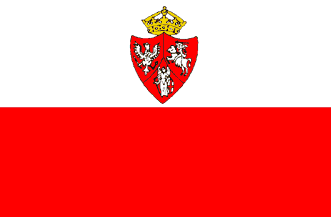 |
| LOCAL HISTORY |
| 600 - The
Mounds of Krakus and Wanda are built in Krakow 850 - 1000 City walls are erected around the settlement of Wislanie people at Saint Martin's Mountain at Tarnow. The influence of Tarnow extends to the Wisloka River. 966 - Duke Mieszko I converts to Christianity and marries Dabrowka of Bohemia . He replaces paganism with Roman Catholicism as the religion of the new realm of Poland. The era of modern Poland begins. 985 - Ibrahim Ibn Jakub of Cordoba describes Krakow as a thriving city located at a crossing of trade routes surrounded by forests. 1100-1300 Villages grow in the Sandomierz Forest near Pilzno and Debica. Chronology. 1241 - Krakow is nearly destroyed in the first of three Mongol invasions (1241, 1257, 1287). Cattle and chattel are reported stolen from Debica in one of the three Tartar incursions. 1275 - The parish at Straszecin is formed and a wooden church erected. 1293 - Duke Leszek the Black (Leska Czarnego) endows the settlement of "Dembicha" to the Gryfit family 1318 - The first church, dedicated to Sts. Hedwig and Margaret, is erected in Debica. 1327 - The decanate of Debica includes the parishes of Brzeznica, Lubzina, Przeclaw, Sedziszow, Straszecin, Zdziarzec and seven others. 1328 - Benedictine Abbott Michal in Tyniec issues a charter allowing a Mr. Urs to establish a town "Pilsno". 1346-1353 - The Great Plague, also known as The Black Death, sweeps through southern and western Europe killing up to 50% of the urban populations there. When the Jews are blamed and persecuted, King Kazimierz Wielki invites them to Poland and declares them to be "a people of the king". Few cases of plague are reported in Poland. 1354 - King Kazimierz the Great issues a charter for Pilzno. 1358 - King Kazimierz the Great issues foundation privileges for Debica to Swietoslaw Gryfita. 1358 - The parish of Dobrkow is established. 1372 - Swietoslaw Gryfita empowers Mikolaj of Lipiny to oversee Debica 1395 - Union of Krewo. By their marriage, Queen Jadwiga and Archduke Jagiello unite the Kingdom of Poland and Grand Duchy of Lithuania. The Jagiellonian Dynasty begins. 1407-1418 Mateusz of Glowaczowa, also known as Ulricus de Glowaczow and Ulricus de Strassicz, is a professor at Univerzity Karlovy, College of Law, in Prague. 1474 - Pilzno is burned by a Hungarian army in a brief Polish-Hungarian war. 1476 - Jan of Kolno is the first Pole to sail to North America. He is followed by Franciszek Warrnadowicz in 1492. 1511 - The church dedicated to the Blessed Virgin Mary is built at Straszecin, replacing an earlier parish church built in the late 13th Century. 1544 - Fire destroys much of Debica 1569 - Union of Lublin. The Kingdom of Poland and Grand Duchy of Lithuania form the Polish-Lithuanian Commonwealth. 1573 - The Golden Liberty. New concepts in government are instituted in the Polish- Lithuanian Commonwealth. 1596 - The Union of Brest. The Orthodox metropolitan of Kiev together with many Orthodox bishops agree to end their schism with Rome thus expanding the Greek Rite of the Catholic Church. 1599 - Stara Jastrzabka becomes a separate parish from Zasow Parish. 1608 - First Polish emigrants arrive in North America at Jamestown 1678 - Debica records 700 inhabitants 1705 - Fire badly damages St. Jadwiga Church in Debica 1711 - Statue of St. Cajetanus is erected at the Przyborow in Glowaczowa. 1772 - Southern Poland becomes Galicia, a crownland of Austria, in the First Partition of Poland. Austria receives 2100 square miles and 4,275,000 new subjects that were formerly Polish. Galicia map. 1783 - Johann van Duval (ks. Jana Duwalla) is named the first bishop of the Diocese of Tarnow, which was separated from Krakow in 1772. The new diocese covers 19,633 sq. kilometers, 371 parishes, and 1,147,467 parishioners. 1793-1795 - Tadeusz Kosciusko fails to restore Polish sovereignty 1831 - Asiatic cholera epidemic sweeps Galicia 1846 - Local peasant farmers attack nobles planning a revolt to free Galicia from Austrian rule. Manors are burned and nobles murdered in Zasow and Straszecin Parishes in the Debica-Pilzno area. 1847 - Typhus and cholera outbreaks occur in Galicia 1853-1855 - A period termed by some as "the Great Famine" 1854 - The "Great Cholera" occurs 1856 - The Archduke Karol Ludwik Railroad, passing through Czarna, Glowaczowa, and Grabiny, is completed at Debica. The line connects Krakow to Lwow. 1862 - The parish at Nagoszyn is established. 1873 - The "Little Cholera" occurs. 1882 - The new elementery school opens in Straszecin. Gora Motyczna has 731 residents. 1884 - The parish at Lubcza is established. 1914-1918 - Galicia enters the Great War as part of the Austrian-Hungarian Empire. 1919 - Poland's sovereignty is restored. 1939-1944 - Deprivation, death, and duty during wartime occupation by Germany. 1945 - The liberating Soviet Red Army torches the church at Straszecin. 1946-1952 - The parish church at Straszecin is rebuilt. 1945-1950 - Manors across Poland, including the Przyborow in Glowaczowa, are nationalized by the communist government. |
| Dennis Benarz, Chicagoland USA 2002-2009 |
 |
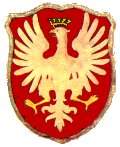 |
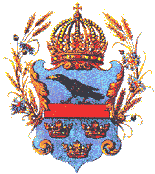 |
Grace Skowron, and Dennis Benarz |
| Background Music: Frederik Chopin, Opus 10, 3 |
| Sources include: |
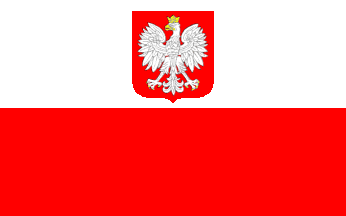 |
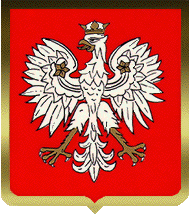 |